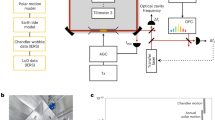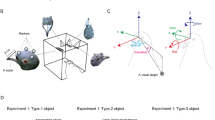Abstract
EXISTING instruments for making precise trajectory observations on artificial Earth satellites generally employ photographic techniques, a good example being the Schmidt–Baker–Nunn cameras of the Smithsonian Astrophysical Observatory. Since the launching of Sputnik 2, we have been experimenting with optical tracking by a photo-electric method which appears capable of adequate sensitivity and a precision comparable with that of astronomical observations, and thus high enough for observing the non-secular perturbations of a satellite orbit. The principal advantage of the method is the simpler design of the optical system since a long focal length can be used, unlike the photographic method where a short-focus lens is required. The correction of lens aberrations is thereby rendered much easier. A performance in many ways comparable with the Schmidt–Baker–Nunn camera has been obtained with a lens having a 5-in. diameter aperture and 14-in. focal length.
This is a preview of subscription content, access via your institution
Access options
Subscribe to this journal
Receive 51 print issues and online access
$199.00 per year
only $3.90 per issue
Buy this article
- Purchase on Springer Link
- Instant access to full article PDF
Prices may be subject to local taxes which are calculated during checkout
Similar content being viewed by others
Author information
Authors and Affiliations
Rights and permissions
About this article
Cite this article
WILLMORE, A. A New Method of tracking Artificial Earth Satellites. Nature 182, 1008–1010 (1958). https://doi.org/10.1038/1821008b0
Issue Date:
DOI: https://doi.org/10.1038/1821008b0
This article is cited by
Comments
By submitting a comment you agree to abide by our Terms and Community Guidelines. If you find something abusive or that does not comply with our terms or guidelines please flag it as inappropriate.



